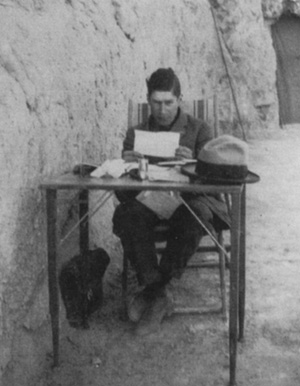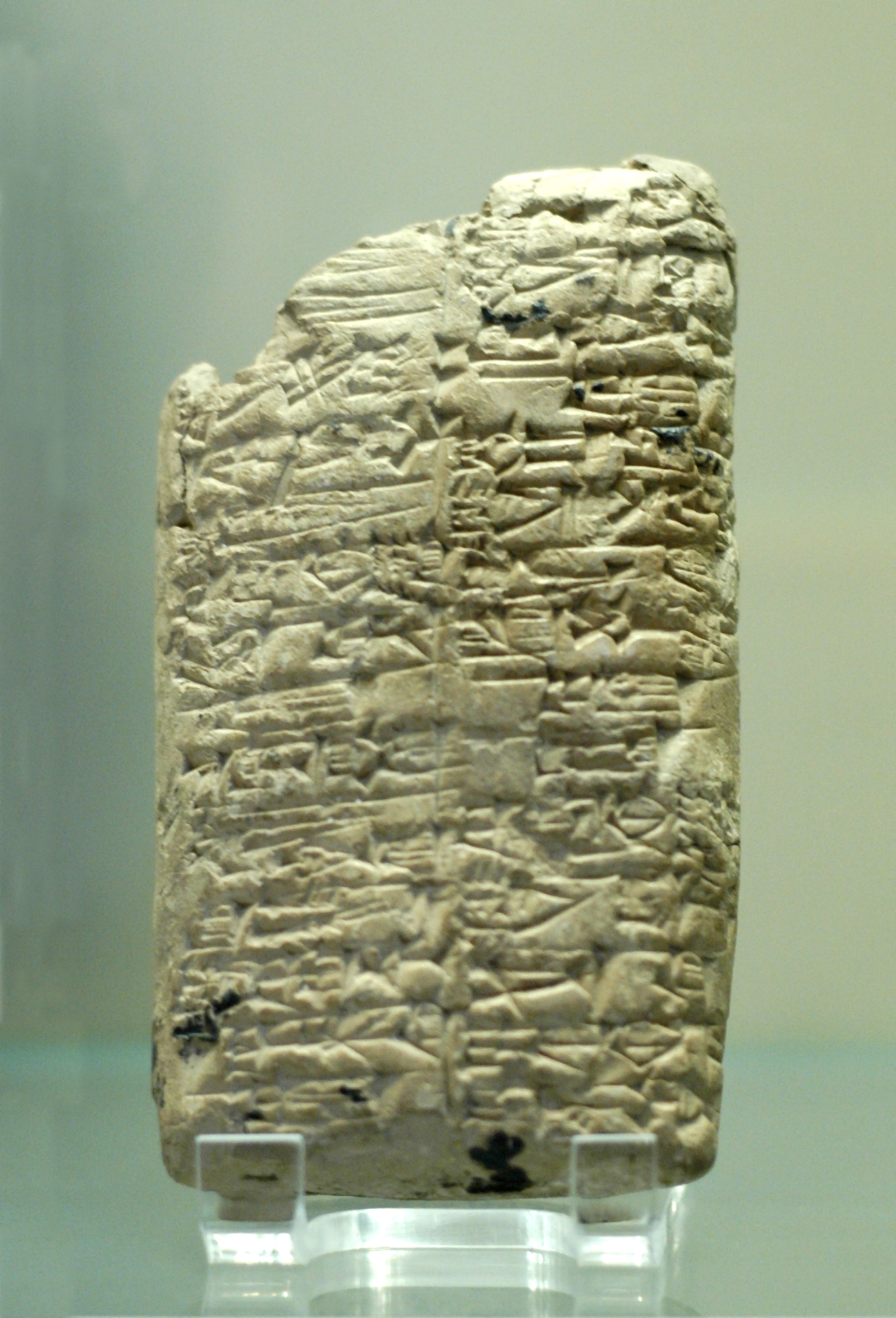|
Sumerian King List
The ''Sumerian King List'' (abbreviated ''SKL'') or ''Chronicle of the One Monarchy'' is an ancient Composition (language), literary composition written in Sumerian language, Sumerian that was likely created and redacted to legitimize the claims to power of various city-states and kingdoms in southern Mesopotamia during the late third and early second millennium BC. It does so by repetitively listing Sumerian cities, the kings that ruled there, and the lengths of their reigns. Especially in the early part of the list, these reigns often span thousands of years. In the oldest known version, dated to the Third Dynasty of Ur, Ur III period () but probably based on Akkadian Empire, Akkadian source material, the ''SKL'' reflected a more linear transition of power from Kish (Sumer), Kish, the first city to receive kingship, to Akkad (city), Akkad. In later versions from the Old Babylonian Empire, Old Babylonian period, the list consisted of a large number of cities between which kingshi ... [...More Info...] [...Related Items...] OR: [Wikipedia] [Google] [Baidu] |
Weld-Blundell Prism
The Weld-Blundell Prism ("WB", dated 1800 BCE) is a clay, cuneiform inscribed vertical Prism (geometry), prism housed in the Ashmolean Museum in Oxford. The prism was found in a 1922 expedition in Larsa in modern-day Iraq by British archaeologist Herbert Weld Blundell. The four sides, about 20 cm high and 9 cm wide, are inscribed in the Sumerian language with lists of Sumerian Sumerian King List, kings; each side contains the text in two columns: this is the famous Sumerian King List. It is considered as the most complete of the Sumerian King Lists which have been found, of which there are approximately 25 more or less complete fragments as of 2016. The list begins with the antediluvian rulers and ends with Suen-magir, Sin-magir of the Isin dynasty (r. 1827–1817). The list was most likely written in Sin-magir's final year, or soon after. Many, especially antediluvian, kings are credited with incredibly long reigns (counted in sars and nerah), as a result of which many s ... [...More Info...] [...Related Items...] OR: [Wikipedia] [Google] [Baidu] |
Mesopotamia
Mesopotamia is a historical region of West Asia situated within the Tigris–Euphrates river system, in the northern part of the Fertile Crescent. Today, Mesopotamia is known as present-day Iraq and forms the eastern geographic boundary of the modern Middle East. Just beyond it lies southwestern Iran, where the region transitions into the Iranian plateau, Persian plateau, marking the shift from the Arab world to Iran. In the broader sense, the historical region of Mesopotamia also includes parts of present-day Iran (southwest), Turkey (southeast), Syria (northeast), and Kuwait. Mesopotamia is the site of the earliest developments of the Neolithic Revolution from around 10,000 BC. It has been identified as having "inspired some of the most important developments in human history, including the invention of the wheel, the planting of the first cereal crops, the development of cursive script, mathematics, astronomy, and agriculture". It is recognised as the cradle of some of t ... [...More Info...] [...Related Items...] OR: [Wikipedia] [Google] [Baidu] |
Dynasty
A dynasty is a sequence of rulers from the same family, usually in the context of a monarchy, monarchical system, but sometimes also appearing in republics. A dynasty may also be referred to as a "house", "family" or "clan", among others. Historians periodization, periodize the histories of many states and civilizations, such as the Roman Empire (27 BC – AD 1453), History of Iran, Imperial Iran (678 BC – AD 1979), Ancient Egypt (3100–30 BC), and History of China#Ancient China, Ancient and Imperial China (2070 BC – AD 1912), using a framework of successive dynasties. As such, the term "dynasty" may be used to delimit the era during which a family reigned. Before the 18th century, most dynasties throughout the world were traditionally reckoned patrilineality, patrilineally, such as those that followed the Franks, Frankish Salic law. In polities where it was permitted, succession through a daughter usually established a new dynasty in her husband's family name. This has ... [...More Info...] [...Related Items...] OR: [Wikipedia] [Google] [Baidu] |
Lugal
( Sumerian: ) is the Sumerian term for "king, ruler". Literally, the term means "big man." In Sumerian, ''lú'' " 𒇽" is "man" and ''gal'' " 𒃲" is "great", or "big." It was one of several Sumerian titles that a ruler of a city-state could bear (alongside '' en'' and '' ensi'', the exact difference being a subject of debate). The sign eventually became the predominant logograph for "King" in general. In the Sumerian language, is used to mean an owner (e.g. of a boat or a field) or a head (of a unit such as a family). As a cuneiform logograph (Sumerogram) LUGAL (Unicode: 𒈗, rendered in Neo Assyrian). Cuneiform The cuneiform sign LUGAL 𒈗 (Borger nr. 151, Unicode U+12217) serves as a determinative in cuneiform texts ( Sumerian, Akkadian and Hittite), indicating that the following word is the name of a king. In Akkadian orthography, it may also be a syllabogram ''šàr'', acrophonically based on the Akkadian for "king", ''šarrum''. Unicode also includes the cuneif ... [...More Info...] [...Related Items...] OR: [Wikipedia] [Google] [Baidu] |
Early Dynastic Period (Mesopotamia)
The Early Dynastic Period (abbreviated ED Period or ED) is an archaeological culture in Mesopotamia (modern-day Iraq) that is generally dated to and was preceded by the Uruk and Jemdet Nasr periods. It saw the development of writing and the formation of the first cities and states. The ED itself was characterized by the existence of multiple city-states: small states with a relatively simple structure that developed and solidified over time. This development ultimately led, directly after this period, to broad Mesopotamian unification under the rule of Sargon, the first monarch of the Akkadian Empire. Despite their political fragmentation, the ED city-states shared a relatively homogeneous material culture. Sumerian cities such as Uruk, Ur, Lagash, Umma, and Nippur located in Lower Mesopotamia were very powerful and influential. To the north and west stretched states centered on cities such as Kish, Mari, Nagar, and Ebla. The study of Central and Lower Mesopotamia has l ... [...More Info...] [...Related Items...] OR: [Wikipedia] [Google] [Baidu] |
Clay Tablet
In the Ancient Near East, clay tablets (Akkadian language, Akkadian ) were used as a writing medium, especially for writing in cuneiform, throughout the Bronze Age and well into the Iron Age. Cuneiform characters were imprinted on a wet clay tablet with a stylus often made of Reed (plant), reed (reed pen). Once written upon, many tablets were dried in the sun or air, remaining fragile. Later, these unfired clay tablets could be soaked in water and recycled into new clean tablets. Other tablets, once written, were either deliberately fired in hot kilns, or inadvertently fired when buildings were burnt down by accident or during conflict, making them hard and durable. Collections of these clay documents made up the first archives. They were at the root of the first library, libraries. Tens of thousands of written tablets, including many fragments, have been found in the Middle East. Most of the documents on tablets that survive from the Minoan civilization, Minoan and Mycenaean ... [...More Info...] [...Related Items...] OR: [Wikipedia] [Google] [Baidu] |
Scheil Dynastic Tablet
The Scheil dynastic tablet is an ancient Mesopotamian cuneiform text containing a variant form of the ''Sumerian King List''. Discovery The tablet came into possession of the Assyriologist Jean-Vincent Scheil in 1911, having bought it from a private collection in France. The tablet when purchased was reported to have been unearthed from Susa. Scheil translated the tablet in 1911. The tablet dates to the early 2nd millennium BC. He obtained another document, a rather damaged prism similar to the Weld-Blundell Prism, which he translated in 1934, and completed using information from the 1911 tablet and other known documents. The 1911 tablet is currently owned by the British Museum The British Museum is a Museum, public museum dedicated to human history, art and culture located in the Bloomsbury area of London. Its permanent collection of eight million works is the largest in the world. It documents the story of human cu ..., but is not on display. References {{reflist Clay ... [...More Info...] [...Related Items...] OR: [Wikipedia] [Google] [Baidu] |
Hermann Volrath Hilprecht
Hermann Volrath Hilprecht (July 28, 1859 – March 19, 1925) was a German- American Assyriologist and archaeologist. Biography Hilprecht was born in 1859 at Hohenerxleben (now a part of Staßfurt), Kingdom of Prussia. He graduated from Herzogliches Gymnasium at Bernburg in 1880. Afterwards he went on to the University of Leipzig where he studied theology, philology, and law. In 1882, he spent two months in the British Museum studying cuneiform literature. He received his Ph.D. from Leipzig in 1883. He then spent two years in Switzerland for his health. From 1885 to 1886 he became an instructor in Old Testament theology at the University of Erlangen. In 1886, he left for the United States, where he became linguistic editor of the ''Sunday-School Times'', and a professor of Assyrian at the University of Pennsylvania. Also in 1886, he was elected as a member of the American Philosophical Society. The next year, 1887, he also became curator for the Semitic department of the Uni ... [...More Info...] [...Related Items...] OR: [Wikipedia] [Google] [Baidu] |
Isin
Isin (, modern Arabic language, Arabic: Ishan al-Bahriyat) is an archaeological site in Al-Qādisiyyah Governorate, Iraq which was the location of the Ancient Near East city of Isin, occupied from the late 4th millennium Uruk period up until at least the late 1st millennium BC Neo-Babylonian period. It lies about southeast of the modern city of Al Diwaniyah. The tutelary deity of Isin, dating back to at least the Early Dynastic Period (Mesopotamia), Early Dynastic period, was the healing goddess Gula (goddess), Gula with a major temple (, E-gal-ma) sited there as well as smaller installations for the related gods of Ninisina and Ninlil, Sud. Archaeology Isin is located approximately south of the ancient city of Nippur. The site covers an area of about 150 hectares with a maximum height of about 10 meters. By 1922 the site had been suggested as that of Isin. Ishan al-Bahriyat was visited by Stephen Herbert Langdon for a day to conduct a sounding, while he was excavating at K ... [...More Info...] [...Related Items...] OR: [Wikipedia] [Google] [Baidu] |
Antediluvian
The antediluvian (alternatively pre-diluvian or pre-flood) period is the time period chronicled in the Bible between the fall of man and the Genesis flood narrative in biblical cosmology. The term was coined by Thomas Browne (1605–1682). The narrative takes up chapters 1–6 (excluding the flood narrative) of the Book of Genesis. The term found its way into early geology and science until the late Victorian era. Colloquially, the term is used to refer to any ancient and murky period. Precedents The Eridu Genesis is alleged to be the direct antecessor to the biblical flood as well as other Near Eastern flood stories, and reflects a similar religious and cultural relevance to their Sumerian religion, religion. Much as the Abrahamic religions, ancient Sumerians divided the world between pre-flood and post-flood eras, the former being a time where the God walked the earth with humans. Humans ceased to be immortal ever since Adam and Eve sinned, the flood was then punishment for the ... [...More Info...] [...Related Items...] OR: [Wikipedia] [Google] [Baidu] |
Old Babylonian Empire
The Old Babylonian Empire, or First Babylonian Empire, is dated to , and comes after the end of Sumerian power with the destruction of the Third Dynasty of Ur, and the subsequent Isin-Larsa period. The chronology of the first dynasty of Babylonia is debated; there is a Babylonian King List A and also a Babylonian King List B, with generally longer regnal lengths. In this chronology, the regnal years of List A are used due to their wide usage. Hardship of searching for origins of the First Dynasty The origins of the First Babylonian dynasty are hard to pinpoint because Babylon itself yields few archaeological materials intact due to a high water table. The evidence that survived throughout the years includes written records such as royal and votive inscriptions, literary texts, and lists of year-names. The minimal amount of evidence in economic and legal documents makes it difficult to illustrate the economic and social history of the First Babylonian Dynasty, but with historica ... [...More Info...] [...Related Items...] OR: [Wikipedia] [Google] [Baidu] |
Akkad (city)
Akkad (; also spelt Accad, Akkade, a-ka₃-de₂ki or Agade, Akkadian: , also URI KI in Sumerian during the Ur III period) was the capital of the Akkadian Empire, which was the dominant political force in Mesopotamia during a period of about 150 years in the last third of the 3rd millennium BC. Its location is unknown. In the early days of research various unidentified mounds were considered as the location of Akkad. In modern times most of the attention has focused on an area roughly defined by 1) near Eshnunna, 2) near Sippar, 3) not far from Kish and Babylon, 4) near the Tigris River, and 5) not far from the Diyala River – all within roughly 30 kilometers of modern Baghdad in central Iraq. There are also location proposals as far afield as the Mosul area in northern Iraq. The main goddess of Akkad was Ishtar-Annunitum or ''‘Aštar-annunîtum'' (Warlike Ishtar), though it may have been a different aspect, Istar- Ulmašītum. Her husband Ilaba was also revered. Is ... [...More Info...] [...Related Items...] OR: [Wikipedia] [Google] [Baidu] |








